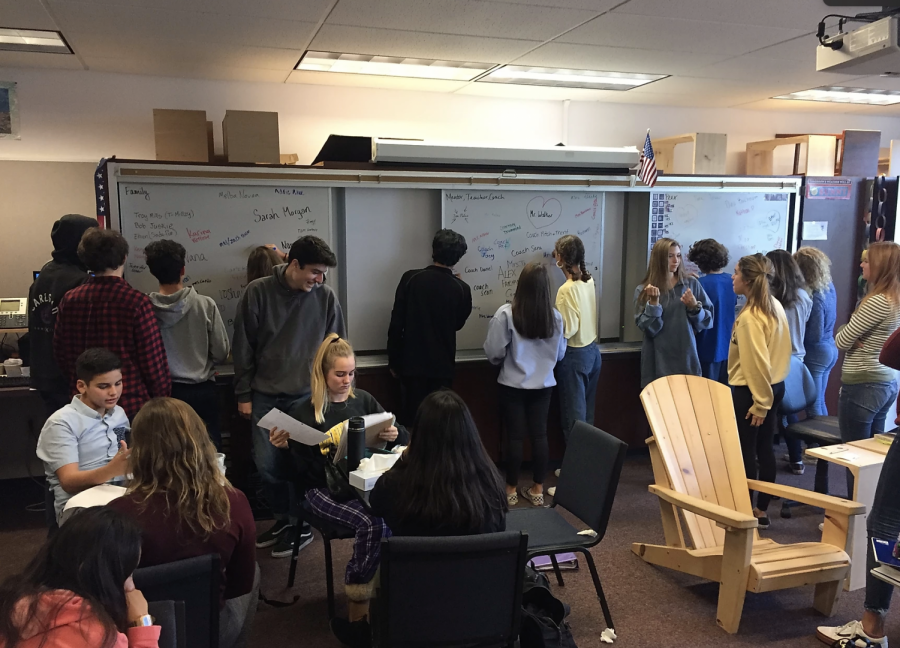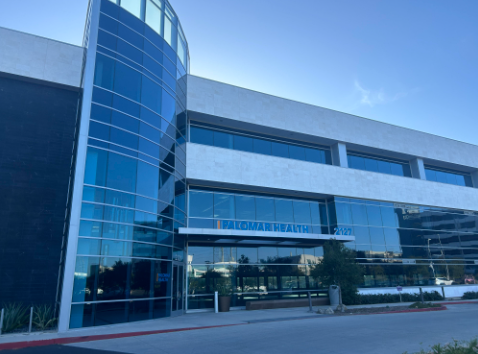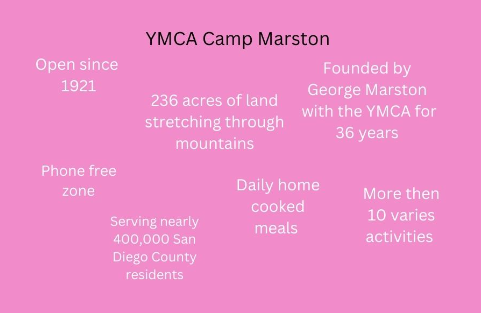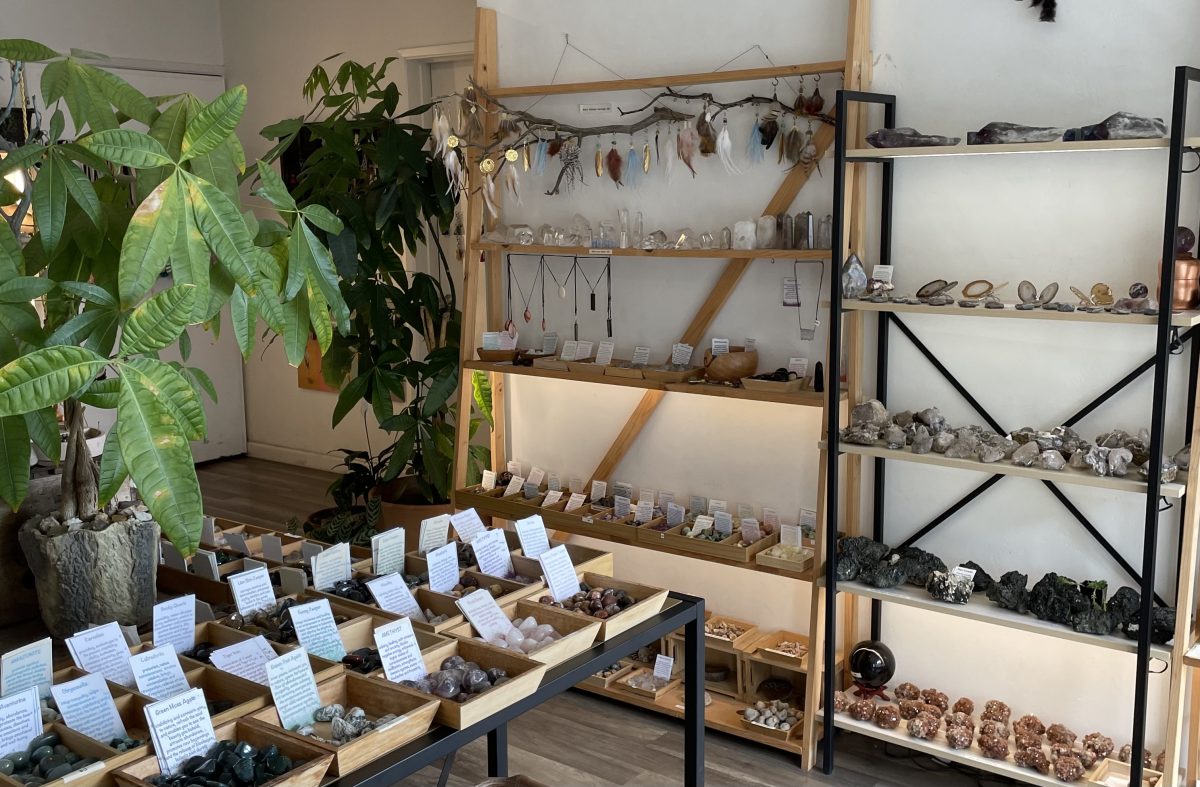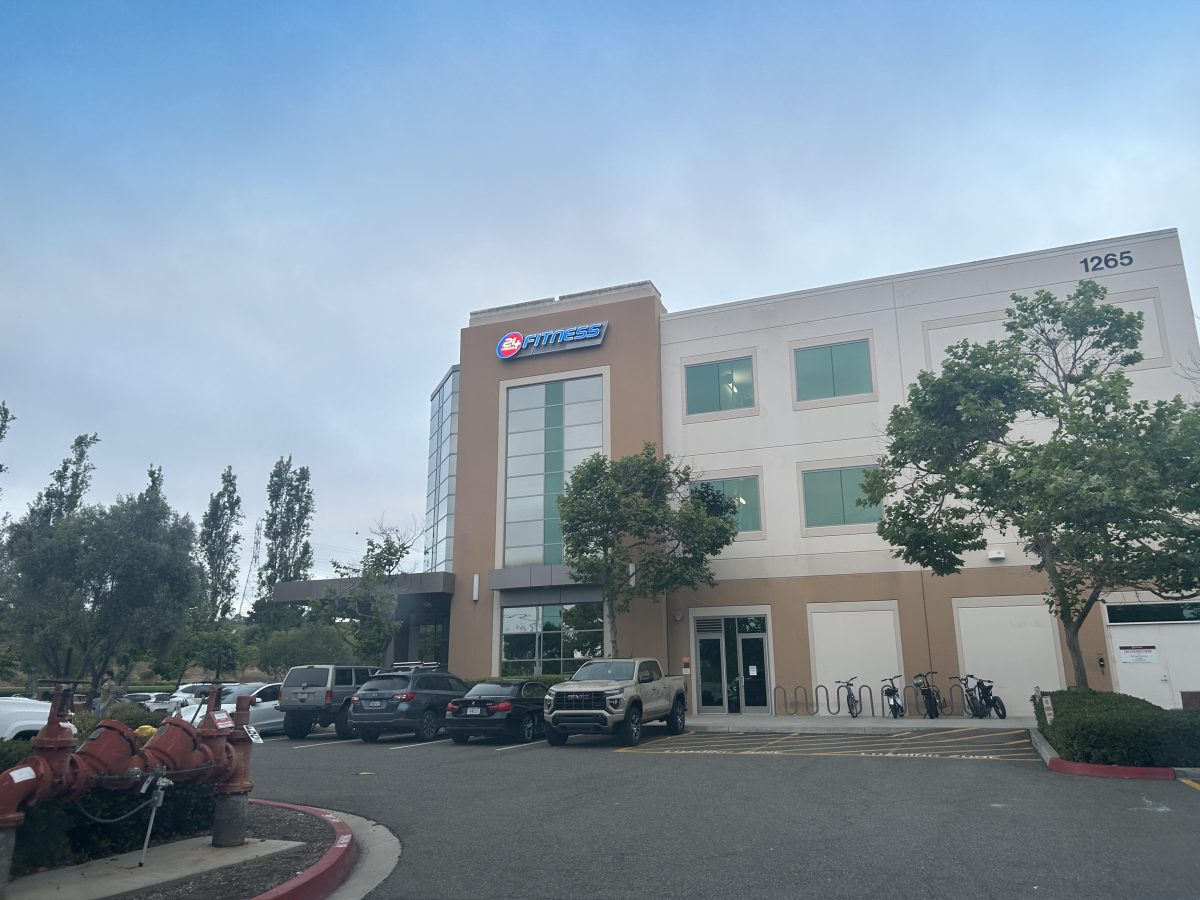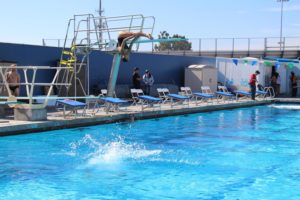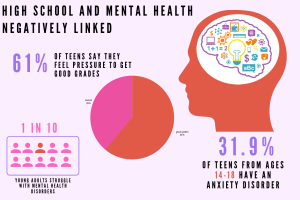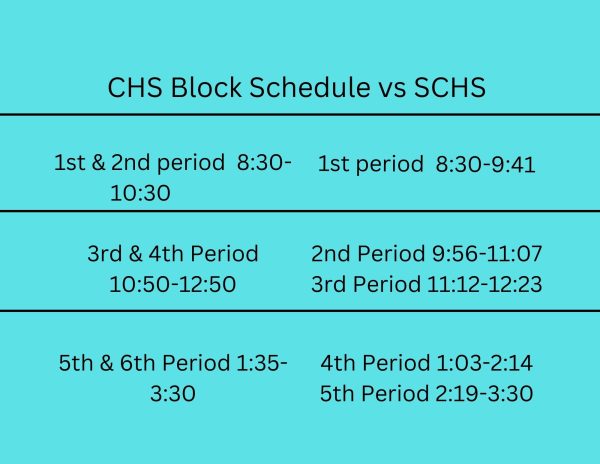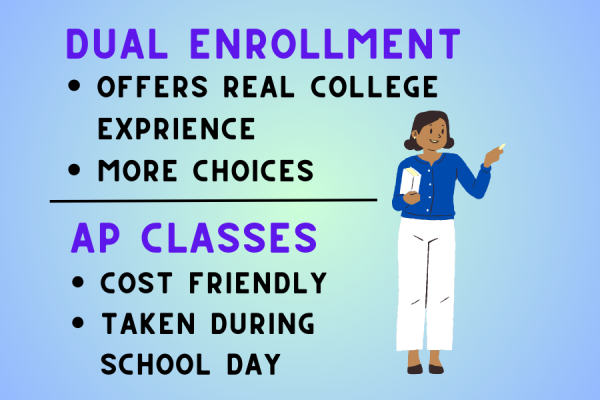Do flexible learning spaces work?
Thompson’s students find and discuss thematic ideas in their books during an interactive class discussion.
February 12, 2020
Wouldn’t it just be great if you as a teacher saw a former student using the life skills you taught them in your class due to the flexible learning environment? In the past couple of years, a handful of teachers at CHS have transformed their classrooms into flexible learning spaces for students.
These spaces include comfortable furniture such as couches, bean-bags, stools and whiteboard tables. Teachers like Marisa Thompson, who teaches English, bought her furniture from a restaurant that was closing down because brand new furniture can be costly. Thompson hoped to create a safe and unique space for students to be able to express their own thoughts without the pressure of rows and rows of desks. She strives for a classroom that is comfortable for all students makes them want to come to class each day.
However, not everyone supports the flexible learning space idea. People arguing against this type of learning have made a claim about how it does not prepare students for the future. A flexible learning space allows students to pick and choose their seats, but maybe from an outsider or parental perspective it may be difficult for students to focus on the concepts teachers present to the class. This may be a drawback for teachers in the sense that controlling the class will be more challenging because of the loss of attention.
Some might argue that desks are the way to go with a classroom because they are the standard and students have been used to them since they started school. Despite that, desks can be very uncomfortable especially if students are sitting in them for two hours. When students feel cramped up in their seat it makes them want to get up and walk around, which is just more distracting for the class which is why the flexible learning environment provides a variety of seating options for students. Despite this potential distraction, Thompson and many other teachers feel that when students have the ability to pick their own seats they feel more in charge and become more engaged in the class which promotes better learning.
Going to college and having a nine-to-five job can be nerve wracking when students first graduate high school or college. The positive impact that open seating has on students replicates the real world and prepares them to thrive in this kind of environment. Having rows of desks for students to sit in is not what it is like in the real world, so having the opportunity to sit wherever students please advocates for helping students transition easier to college and when they have a job. For example, working in an office is a completely different environment than going to school and sitting in rows of desks. With the flexible learning space, it allows the student to experience a real-life situation before they have to face it on their own.
Personally, I enjoy having a flexible learning environment because it allows me to move around to other parts of the room and get a different view of the classroom. Most teachers have seating charts and we aren’t allowed to move seats until the teacher switches them, but in this kind of environment, I can sit wherever I want next to whomever I want. I really like being able to sit with my Nonetheless, some would say students will just sit next to their friends and not do anything during class but sitting next to a friend makes the class more enjoyable and allows for the student to open up because they are sitting next to someone who they are comfortable with.
Lastly, one of the biggest benefits to having a flexible learning environment is it promotes collaboration among the students. Usually, when there are desks it can be hard to talk to others in class because you need to turn around or tap the person in front of you, but when you have a flexible space for students to talk at a table it promotes more participation with students.
Flexible learning spaces have proved to have numerous benefits for students not only benefiting their present education but also their future. Students would much rather have the freedom of the classroom and be given the option of a new perspective of the classroom rather than seating charts where you are forced to sit next to the same people. Proven through many studies, having a flexible learning space enhances the learning experience of the student.



